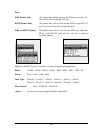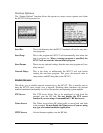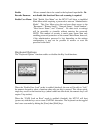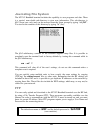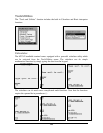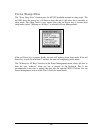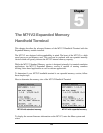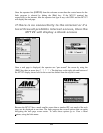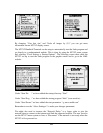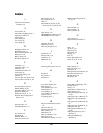
119
Diagnostic Menu > Firmware Version
You should now see a screen similar to the ones above.
Note in the above examples, the standard memory version DOES NOT have a -32
extension listed with the RAM DISK IMAGE version or the LINUX KERNEL version.
The RAM DISK IMAGE for the standard memory version will not have a 32 listed in the
file name.
The RAM DISK IMAGE for the expanded memory version will have a -32 listed in
the file name (e.g. 1.4.1-32).
The BOOTLOADER and DECODER can only be re-programmed at the factory.
The RAM DISK IMAGE can be updated by downloading the latest version from the
AML website (www.amltd.com). For more information on updating the firmware see
Updating Firmware in chapter 3 of this manual.
The M71V2 Memory Allocation
To reduce weight and increase reliability, the M71V2 does not have a mechanical hard
drive like a standard PC, and all programs and data must be stored in the M71V2’s
electronic memory devices. The M71V2 has two types of electronic memory devices,
Flash and RAM.
The RAM memory works much like a standard PC, The Linux operating system and any
programs currently being executed, are utilizing the RAM memory. Very large programs
that exceed the RAM memory storage size cannot be executed on the M71V2. Just like in
a standard PC, this RAM memory is lost when the unit is powered off. All permanent
storage of the operating system, programs and data must be done in the Flash memory.
Some of the Flash memory is used by the Linux operating system along with some
associated programs. On the expanded memory version of the M71V2, there is a large
percentage of Flash memory available for user programs. These user programs are often
added to the Linux kernel and downloaded to the M71V2 as one large memory block.
Sometimes the users will wish to add programs at a later date or store temporary data in
the Flash memory. The M71V2 has a special sub-directory for all programs and data that
are temporary but must be saved even when the unit is turned off. This is the “Journaling
Flash File System” sub-directory also know as the “jffs2”.



